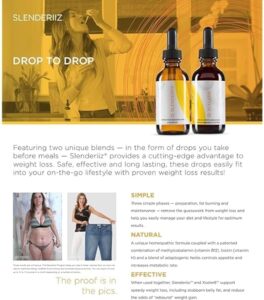
Key Takeaways
Dehydroacetic Acid (DHA) is a safe and effective preservative found in many skincare products.
It protects skincare items from bacteria and fungi, extending shelf life and maintaining product integrity.
Recognizable on ingredient lists as Dehydroacetic Acid, DHA, or its salts, it’s often paired with other preservatives like Benzyl Alcohol.
Approved by the FDA and the European Commission, DHA is safe for use in specific concentrations.
Always check product labels to ensure the preservatives used are within the recommended safety guidelines.
My favorite Holistic Skincare Products
Arbonne, a leader in the health and wellness industry for over 40 years, remains dedicated to clean beauty and sustainability, prioritizing people and the planet in every decision as evidenced by their Certified B Corporation status.
You can buy Arbonne Skincare Products here.
Spotlight on Dehydroacetic Acid: A Skincare Game Changer
Ever wonder what keeps your favorite skincare products fresh and effective from the first use to the last? Enter Dehydroacetic Acid, a skincare champion that’s not always in the limelight but deserves a standing ovation for keeping our cherished potions safe and potent. Let’s dive into why this ingredient is a must-have in your skincare arsenal.
Why Your Skin Loves This Unsung Hero
Imagine a knight in shining armor for your skincare products—Dehydroacetic Acid is just that. It’s a guardian that ensures your creams, serums, and lotions stay free from the pesky microbes that can cause spoilage. But it’s not just about longevity; it’s about maintaining the effectiveness and safety of the skincare products we apply daily. This means every time you pamper your skin, it’s with the best quality product, thanks to Dehydroacetic Acid.
Where to Find Dehydroacetic Acid on Your Ingredient List
Curious about whether your go-to moisturizer contains this protective powerhouse? You’ll typically find Dehydroacetic Acid listed among the ingredients toward the end, often in combination with Benzyl Alcohol. Together, they form a dynamic duo that offers enhanced preservation capabilities. Remember, a well-preserved product is not just about longevity but also about the safety and efficacy of the skincare treasures you apply to your skin.
The Power of Preservation
Why is preservation so crucial in skincare? Think of it this way: just as food can spoil without proper care, so can your skincare products. Dehydroacitic Acid acts as a barrier, keeping out microorganisms that could compromise the quality and safety of your products. And when your skincare is well-preserved, it means every application is as fresh as the first, ensuring your skin reaps the full benefits of the active ingredients.
Boosting Product Shelf Life
With Dehydroacitic Acid in the mix, your skincare products enjoy a longer shelf life. This isn’t just good for your wallet; it’s good for your skin. You can invest in quality skincare knowing that the active ingredients won’t degrade quickly, and you won’t have to replace your products as often. That’s the kind of assurance Dehydroacitic Acid brings to the table.
Keeping Your Skin Safe from Unwanted Guests
Bacteria and fungi are uninvited guests that you definitely don’t want crashing your skincare party. Dehydroacitic Acid helps to ensure these unwanted organisms stay out, keeping your skincare routine safe and effective. And when your skincare is protected, your skin is protected, resulting in a happier, healthier complexion.
The Antimicrobial Guard
Dehydroacetic Acid isn’t just a preservative; it’s a microbiological gatekeeper. It’s your skincare’s secret weapon against the invisible threat of bacteria and fungi that can cause not only product degradation but also skin irritations or infections. By including this ingredient in formulas, brands are prioritizing your skin’s health and the product’s purity.
Battling Bacteria and Fungi
Why should we worry about bacteria and fungi in our skincare? Because our skin is our first line of defense, and what we put on it matters. Dehydroacetic Acid works tirelessly to fend off these microorganisms, ensuring that every time you dip your fingers into your cream or lotion, you’re not introducing harmful bacteria to your skin. It’s a silent guardian for your beauty regimen.
A Protector for All Skin Types
Regardless of whether you have dry, oily, or sensitive skin, Dehydroacitic Acid is a preservative that plays well with all skin types. It’s a gentle yet effective ingredient that doesn’t discriminate, ensuring everyone can enjoy the benefits of well-preserved skincare products without worry.
Assurance in a Jar: Understanding Safety and Regulation
When it comes to the ingredients in your skincare, safety is paramount. Dehydroacetic Acid is not only effective but also rigorously regulated. Let’s talk about what these regulations mean for you and why you can feel secure using products containing this ingredient.
Navigating FDA Guidelines and What They Mean for You
The FDA has given Dehydroacetic Acid the green light for use in cosmetics, which means experts have assessed it and deemed it safe for your skin. But it’s not a free-for-all; there are specific guidelines about how much can be used. In the US, it’s approved for use in concentrations up to 1%, and in the EU, up to 0.6%. These numbers aren’t arbitrary; they’re based on scientific research that ensures you get all the benefits with no downsides.
Knowing that the FDA has your back should give you peace of mind. When you see Dehydroacetic Acid on your ingredient list, you can trust that it’s there to help, not harm. It’s like having a quality assurance team in every jar, tube, or bottle in your beauty cabinet.
Most importantly, these regulations are in place to ensure that you’re not just safe but also getting the most out of your skincare. With Dehydroacitic Acid, you can focus on your beauty goals, knowing that your products are fresh, effective, and safe.
Maximizing Benefits While Minimizing Risks
It’s all about finding that sweet spot where you can enjoy the full benefits of your skincare without any risks. That’s exactly what Dehydroacitic Acid helps to achieve. By adhering to the recommended concentrations, you’re ensuring that your skin is exposed to just the right amount of this protective ingredient—enough to preserve but never to irritate.
Decoding Skincare Labels
Skincare labels can sometimes feel like a foreign language, but once you know what to look for, they’re actually quite informative. Let’s break down how to spot Dehydroacetic Acid on your labels and understand what its presence means for your product’s formulation.
Identifying Dehydroacitic Acid Amongst Crowded Ingredient Lists
When you’re scanning the ingredient list of your latest skincare find, keep an eye out for ‘Dehydroacetic Acid,’ ‘DHA,’ or its salts like ‘Sodium Dehydroacetate.’ These are all names that indicate the presence of this preservative. It’s usually nestled towards the end of the list, signaling its role as a preservative rather than a primary active ingredient.
But why should you care about spotting it? Because knowing what’s in your skincare is empowering. It means you can make informed choices about the products you’re using and ensure they align with your skin’s needs and your personal values. Learn more about Dehydroacetic Acid in Skin Care.
And besides that, recognizing Dehydroacetic Acid on your labels is a good sign—it means your product is protected against microbial growth, and so is your skin. It’s a little like finding the seal of approval from the skincare guardians.
Combining Forces: Dehydroacetic Acid and Other Preservatives
Dehydroacetic Acid often doesn’t work alone. It’s frequently paired with other preservatives, such as Benzyl Alcohol, to create a more robust defense system against a wider range of microorganisms. This teamwork approach to preservation means that your skincare products are not just safe, but also remain potent and effective until the very last drop.
Think of it as a tag team where each preservative has its own specialty, covering different bases to ensure comprehensive protection. So, when you see Dehydroacetic Acid listed alongside other preservatives, know that your skincare is getting the ultimate shield against contamination.
FAQ: Dehydroacetic Acid in Skincare
What Is Dehydroacetic Acid and Why Is It Used in Skincare Products?
Dehydroacetic Acid, or DHA, is a bit like the security guard of skincare ingredients. It’s used in products to prevent the growth of bacteria and fungi, which can not only spoil your skincare but also potentially harm your skin. Think of it as an invisible shield, keeping your creams, lotions, and serums safe and effective.
This preservative is especially important in water-based products, which can become breeding grounds for microbes. By including DHA, brands ensure that their products stay fresh and hygienic from the first use to the last.
How Does Dehydroacetic Acid Benefit My Skincare Routine?
Here’s the deal: Dehydroacetic Acid keeps your skincare products in tip-top condition, which means you’re always applying the best possible version of the product to your skin. It’s a behind-the-scenes hero that works hard to:
Extend the shelf life of your skincare products.
Prevent contamination that could lead to skin irritation or infections.
Maintain the potency and effectiveness of active ingredients.
For example, imagine you’ve just bought a vitamin C serum. Vitamin C is known for its brightening properties, but it can degrade quickly when exposed to air and light. Dehydroacetic Acid helps to keep that serum stable, so you get every bit of the glow-promising goodness you paid for.
Without preservatives like DHA, we’d be tossing out skincare products left and right, not to mention exposing our skin to potential irritants. So, while it may not be the ingredient that directly transforms your skin, it’s the one that allows all the others to work their magic.
Is Dehydroacetic Acid Safe for All Skin Types?
Absolutely! When used in the right amounts, Dehydroacetic Acid is safe for every skin type, including sensitive skin. It’s non-irritating and non-sensitizing, which means it’s unlikely to cause any kind of reaction. Of course, everyone’s skin is unique, so if you have concerns, patch testing a new product is always a smart move.
And here’s something reassuring: the concentrations of Dehydroacetic Acid used in skincare are strictly regulated. So, you can trust that the products you’re using have been formulated with your skin’s safety in mind.
But what about those with particularly reactive skin? While Dehydroacitic Acid is generally well-tolerated, if you have a history of allergies or sensitivities, it’s always best to consult with a dermatologist before trying new products.
How Can I Tell if a Product Contains Dehydroacetic Acid?
Finding out if Dehydroacetic Acid is in your skincare is easy—just take a look at the ingredient list on the packaging. You might see it listed as:
Dehydroacetic Acid
DHA
Sodium Dehydroacetate (a salt form)
It’s usually found towards the bottom of the list, as it’s used in smaller quantities than the primary active ingredients.
And remember, its presence is a good thing! It means the brand has taken steps to ensure the product you’re using is safe and stable.
Are There Any Side Effects of Using Products with Dehydroacetic Acid?
In the recommended concentrations, side effects from Dehydroacetic Acid are rare. It’s been thoroughly researched and deemed safe for use in skincare. That being said, as with any ingredient, there’s always a small chance that someone might experience a reaction, particularly if they have a specific allergy to preservatives.
If you notice any redness, itching, or irritation after using a product, it’s best to stop using it and consult with a dermatologist. They can help determine the cause and recommend a suitable alternative if necessary.




Leave a Reply